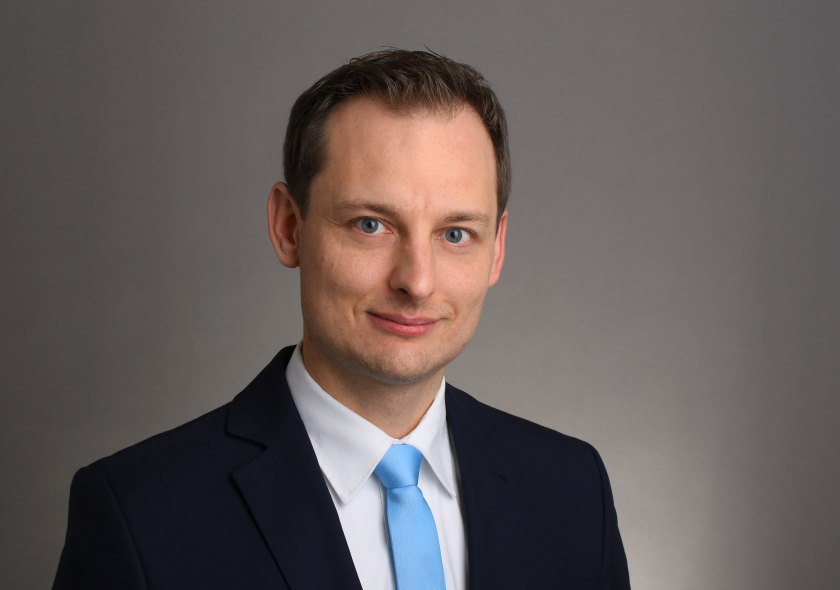Professorship at the University of Augsburg for Felix Büttner

Prof. Dr. Felix Büttner has been called at the University Augsburg. He heads now a joint research group at HZB. © Uni Augsburg
Felix Büttner has led a junior research group at HZB. Now he has accepted a call to the University of Augsburg. As head of a joint research group, he will continue his studies of magnetic skyrmions at BESSY II.
Felix Büttner has been leading a junior research group at HZB since the beginning of 2020, funded by the Young Investigator Grant of the Helmholtz Association. In spring 2022, he was awarded the Walter Schottky Prize of the German Physical Society for his pioneering achievements in the field of magnetic skyrmions. Since July, he holds a professorship at the Institute of Physics, University Augsburg.
Felix Büttner studied in Göttingen and received his doctorate in 2013 for his work at the interface of magnetism and X-ray physics. After a stint in industry at Daimler AG, he worked as a postdoctoral researcher at the Massachusetts Institute of Technology from 2015-2020.
Prof. Dr. Büttner investigates nanotextures in magnetic thin-film materials and drives the development of ultrahigh-resolution X-ray microscopy techniques. The aim is to understand the particle-like dynamics of such topological textures and to prepare their application in information technology.
Under a cooperation agreement between the University of Augsburg and HZB, Büttner will work one day a week at HZB, where he runs laboratories in Wannsee and carries out measurements at BESSY II. His research group will remain in full size.
red./arö
https://www.helmholtz-berlin.de/pubbin/news_seite?nid=24027;sprache=en
- Copy link
-
How carbonates influence CO2-to-fuel conversion
Researchers from the Helmholtz Zentrum Berlin (HZB) and the Fritz Haber Institute of the Max Planck Society (FHI) have uncovered how carbonate molecules affect the conversion of CO
2 into valuable fuels on gold electrocatalysts. Their findings reveal key molecular mechanisms in CO
2 electrocatalysis and hydrogen evolution, pointing to new strategies for improving energy efficiency and reaction selectivity.
-
Peat as a sustainable precursor for fuel cell catalyst materials
Iron-nitrogen-carbon catalysts have the potential to replace the more expensive platinum catalysts currently used in fuel cells. This is shown by a study conducted by researchers from the Helmholtz-Zentrum Berlin (HZB), Physikalisch-Technische Bundesanstalt (PTB) and universities in Tartu and Tallinn, Estonia. At BESSY II, the team observed the formation of complex microstructures within various samples. They then analysed which structural parameters were particularly important for fostering the preferred electrochemical reactions. The raw material for such catalysts is well decomposed peat.
-
Helmholtz Investigator Group on magnons
Dr Hebatalla Elnaggar is setting up a new Helmholtz Investigator Group at HZB. At BESSY II, the materials scientist will investigate so-called magnons in magnetic perovskite thin films. The aim is to lay the foundations for future terahertz magnon technology: magnonic devices operating in the terahertz range could process data using a fraction of the energy required by the most advanced semiconductor devices, and at speeds up to a thousand times faster.
